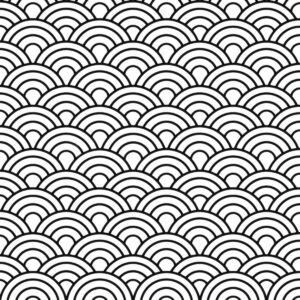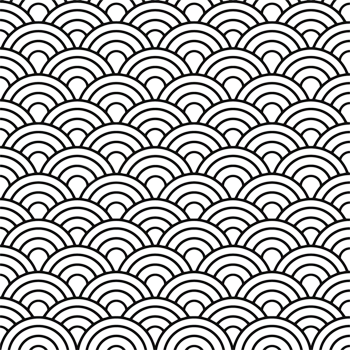
This term refers to the traces of applied tools that remain on the inner surface of the body of Sue ware.
It is so named because it looks like a wave pattern at first glance, but it is actually a series of concentric circles overlapping each other in an irregular pattern. In general, large Sue ware is formed into its approximate shape by making strings, then using a wooden tool with concentric circles engraved on the inner wall of the vessel, and striking the outer surface of the vessel with a striking board to form the shape. The concentric circles, or aomiha, are stamped on the inner wall of the vessel during this process. Concentric circles on Sue ware began to be noted in the late Edo period. Terai Kikuju, in his “Ewonkai Brushstrokes and Writings,” drew attention to the presence of whorl, or concentric circle, patterns on the inner walls of Sue ware vases, and pointed out that these patterns were also found on Korean vases. Later, in the Meiji period (1868-1912), Yagi Saburo and his colleagues also distinguished ceramic earthenware with concentric circles on the inner wall from other Sue ware by calling it Joseon earthenware. However, the name Joseon earthenware is no longer used at all. The original pottery with concentric circles has not yet been discovered.
Seokaiha (blue sea wave): This is a well-known design from long ago, derived from a wave pattern dyed on the clothes of the dancers of the Hoshimaira (Blue Sea Wave) dance.
The design consists of a series of concentric circles divided into four parts. This pattern is often used on ceramics.


